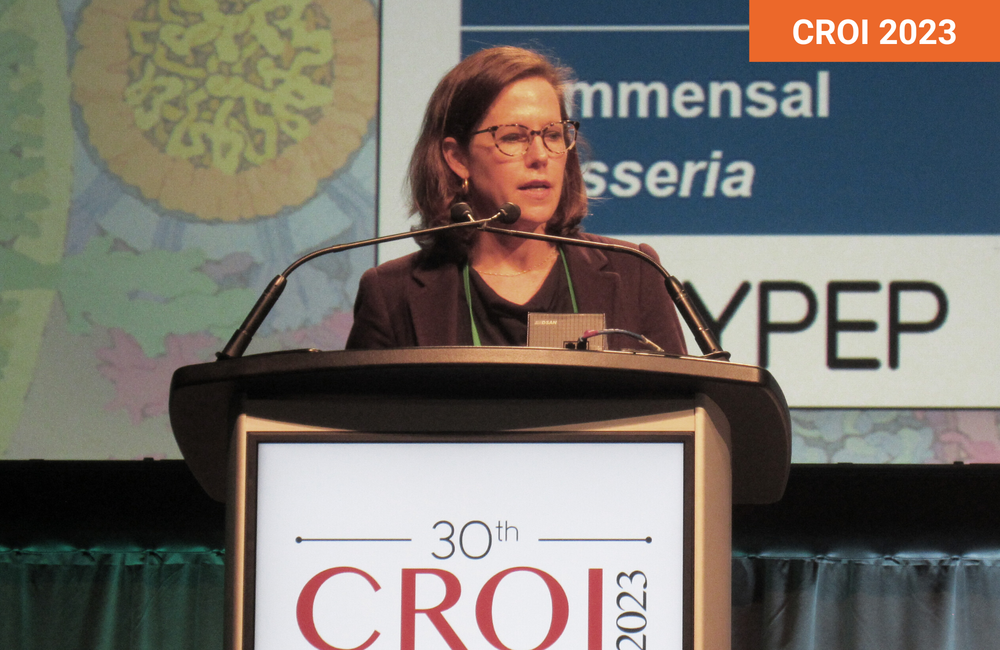
Using the antibiotic doxycycline to prevent the bacterial STIs gonorrhoea, chlamydia and syphilis (‘doxyPEP’) has sparked fears that it may lead to widespread drug resistance, especially in the gonorrhoea bacterium.
However, an analysis of gonorrhoea resistance seen among participants in the US DoxyPEP study, whose main findings were reported last year, shows that while resistance to doxycycline and other drugs of its class is not uncommon, only modest increases in the proportion of gonorrhoea infections with significant resistance were seen, and that there was little difference in resistance rates between people taking doxyPEP and not taking it.
In the DoxyPEP study, doxycycline cut the rate at which gay and bisexual men and transgender women acquired any of the STIs in any three-month period by 65%. Efficacy against chlamydia was 88% and against syphilis 87% in HIV-negative people, and 77% and 74% in people with HIV. But efficacy against gonorrhoea was only 55% in people without HIV and 57% in people with HIV. It was thought this might be due to drug resistance – either already existing in circulating gonorrhoea strains, or developing due to PEP use.
Professor Annie Luetkemeyer of the DoxyPEP team told the 30th Conference on Retroviruses and Opportunistic Infections (CROI 2023) in Seattle, US, that there has also been concern that using antibiotics as PEP for STIs might cause resistance in related bacteria too. So her team tested the gonorrhoea bacterium Neisseria gonorrhoeae, the Staphylococcus aureus bacterium and its multidrug-resistant variant MRSA, and non-pathogenic species of Neisseria bacteria that naturally live in the throat for evidence of resistance.
Neisseria have to be grown in culture to do phenotypic resistance tests, which measure the degree to which the drug inhibits their growth. From 320 people diagnosed with gonorrhoea, they collected 156 viable samples. However, only 66 could be grown in culture and the Minimum Inhibitory Concentration (MIC) of doxycycline could only be determined in 56 of them. MIC is the minimum amount of drug needed to stop the growth of the organism in a lab dish, with a higher MIC indicating more drug resistance.
The 56 samples came from 17 people who were diagnosed with gonorrhoea in the year before study entry and 39 people diagnosed during study follow-up. Of the 39, 20 were taking doxycycline PEP. These relatively small numbers of resistance tests limited the statistical significance of the findings.
Three of the baseline gonorrhoea samples had low-level resistance to doxycycline, meaning the MIC was twice what it is for non-resistance samples, and there was one sample with high-level resistance, meaning an MIC over 16 times higher compared with no resistance. Doxycycline concentrations in the body should probably be enough to deal with low-level resistance but the drug would almost certainly fail against bacteria with high-level resistance.
During follow-up of people not given PEP, there were two out of 19 samples with high-level resistance but none with low-level resistance. But in people on PEP, while there were also only two samples with high-level resistance, there were another four with low-level resistance. While this difference was not statistically significant, it could indicate that resistance was starting to increase as people took PEP.
With Staphylococcus aureus, the percentage of people harbouring it in their nose and throat decreased from 44% at baseline to 30% on people on PEP – a significant decrease, showing that doxycycline was active against this organism too. There was no significant decrease in people not taking PEP.
There was, however, a significant increase in the proportion of S. aureus samples that were resistant in people on PEP, from 5% to 13%. Six per cent of people had MRSA, which declined to 4% in people on PEP, but because of the small numbers this could have been due to chance.
As for the non-pathogenic ‘commensal’ bacteria, a high proportion – 62% – were already resistant to doxycycline at baseline. This declined significantly to 42% in people not taking PEP but increased, though not significantly, in people on PEP.
The researchers also looked at resistance to other antibiotics in gonorrhoea infections acquired during the study. In 20 samples from PEP users, they found three samples resistant to azithromycin (until recently used in some treatment regimens), two to ciprofloxacin, and one to penicillin. In 19 non-PEP users they found two samples resistant to penicillin. No sample was found resistant to cefixime or ceftriaxone, the drugs currently used to treat gonorrhoea.
"In this subset of doxyPEP participants with antimicrobial resistance data, we did not find markedly increased doxycycline resistance," Professor Luetkemeyer concluded. However, longer-term monitoring during doxyPEP implementation, including in the wider community, is needed to gauge the extent and importance of drug resistance in gonorrhoea.
The reason why doxyPEP works less well against gonorrhoea than against chlamydia or syphilis may in fact be more to do with drug levels than syphilis, as suggested by another study at CROI which measured doxycycline concentrations in rectal, vaginal and cervical tissue.
Luetkemeyer A et al. DOXYPEP and antimicrobial resistance in N. Gonorrhoeae, commensal Neisseria and S. Aureus. Conference on Retroviruses and Opportunistic Infections, Seattle, abstract 120, 2023.
